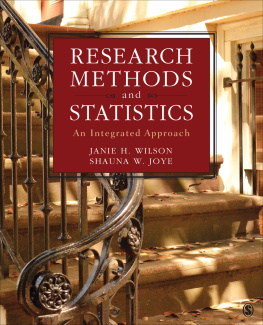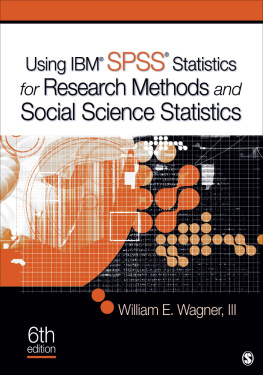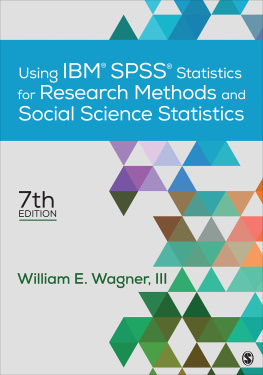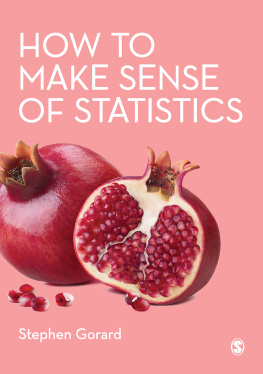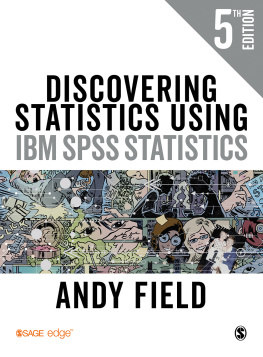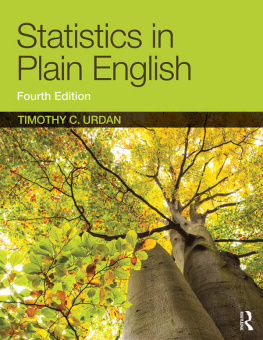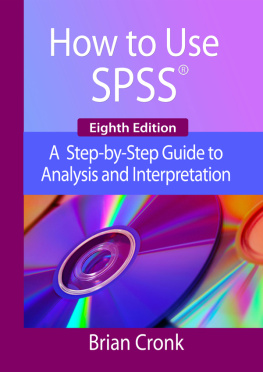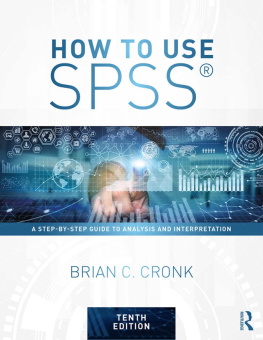DISCOVERING STATISTICS USING R
DISCOVERING STATISTICS USING R

ANDY FIELD | JEREMY MILES | ZO FIELD

Andy Field, Jeremy Miles and Zo Field 2012
First published 2012
Apart from any fair dealing for the purposes of research or private study, or criticism or review, as permitted under the Copyright, Designs and Patents Act, 1988, this publication may be reproduced, stored or transmitted in any form, or by any means, only with the prior permission in writing of the publishers, or in the case of reprographic reproduction, in accordance with the terms of licences issued by the Copyright Licensing Agency. Enquiries concerning reproduction outside those terms should be sent to the publishers.
SAGE Publications Ltd
1 Olivers Yard
55 City Road
London EC1Y 1SP
SAGE Publications Inc.
2455 Teller Road
Thousand Oaks, California 91320
SAGE Publications India Pvt Ltd
B 1/I 1 Mohan Cooperative Industrial Area
Mathura Road
New Delhi 110 044
SAGE Publications Asia-Pacific Pte Ltd
3 Church Street
#10-04 Samsung Hub
Singapore 049483
Library of Congress Control Number: Available
British Library Cataloguing in Publication data
A catalogue record for this book is available from the British Library
ISBN 978-1-4462-0045-2
ISBN 978-1-4462-0046-9
Typeset by C&M Digitals (P) Ltd, Chennai, India
Printed and bound in Great Britain by Ashford Colour Press Ltd
Printed on paper from sustainable resources
Karma Police, arrest this man, he talks in maths, he buzzes like a fridge, hes like a detuned radio.
Radiohead, Karma Police, OK Computer (1997)
Introduction
Many social science students (and researchers for that matter) despise statistics. For one thing, most of us have a non-mathematical background, which makes understanding complex statistical equations very difficult. Nevertheless, the evil goat-warriors of Satan force our non-mathematical brains to apply themselves to what is, essentially, the very complex task of becoming a statistics expert. The end result, as you might expect, can be quite messy. The one weapon that we have is the computer, which allows us to neatly circumvent the considerable disability that is not understanding mathematics. The advent of computer programs such as SAS, SPSS, R and the like provides a unique opportunity to teach statistics at a conceptual level without getting too bogged down in equations. The computer to a goat-warrior of Satan is like catnip to a cat: it makes them rub their heads along the ground and purr and dribble ceaselessly. The only downside of the computer is that it makes it really easy to make a complete idiot of yourself if you dont really understand what youre doing. Using a computer without any statistical knowledge at all can be a dangerous thing. Hence this book. Well, actually, hence a book called Discovering Statistics Using SPSS.
I wrote Discovering Statistics Using SPSS just as I was finishing off my Ph.D. in Psychology. My main aim was to write a book that attempted to strike a good balance between theory and practice: I wanted to use the computer as a tool for teaching statistical concepts in the hope that you will gain a better understanding of both theory and practice. If you want theory and you like equations then there are certainly better books: Howell (2006), Stevens (2002) and Tabachnick and Fidell (2007) are peerless as far as I am concerned and have taught me (and continue to teach me) more about statistics than you could possibly imagine. (I have an ambition to be cited in one of these books but I dont think that will ever happen.) However, if you want a book that incorporates digital rectal stimulation then you have just spent your money wisely. (I should probably clarify that the stimulation is in the context of an example, you will not find any devices attached to the inside cover for you to stimulate your rectum while you read. Please feel free to get your own device if you think it will help you to learn.)
A second, not in any way ridiculously ambitious, aim was to make this the only statistics textbook that anyone ever needs to buy. As such, its a book that I hope will become your friend from first year right through to your professorship. Ive tried to write a book that can be read at several levels (see the next section for more guidance). There are chapters for first-year undergraduates (1, 2, 3, 4, 5, 6, 9 and 15), chapters for second-year undergraduates (5, 7, 10, 11, 12, 13 and 14) and chapters on more advanced topics that postgraduates might use (8, 16, 17, 18 and 19). All of these chapters should be accessible to everyone, and I hope to achieve this by flagging the level of each section (see the next section).
My third, final and most important aim is make the learning process fun. I have a sticky history with maths because I used to be terrible at it:

Above is an extract of my school report at the age of 11. The 27= in the report is to say that I came equal 27th with another student out of a class of 29. Thats almost bottom of the class. The 43 is my exam mark as a percentage. Oh dear. Four years later (at 15) this was my school report:

What led to this remarkable change? It was having a good teacher: my brother, Paul. In fact I owe my life as an academic to Pauls ability to do what my maths teachers couldnt: teach me stuff in an engaging way. To this day he still pops up in times of need to teach me things (many tutorials in computer programming spring to mind). Anyway, the reason hes a great teacher is because hes able to make things interesting and relevant to me. He got the good teaching genes in the family, but theyre wasted because he doesnt teach for a living; theyre a little less wasted though because his approach inspires my lectures and books. One thing that I have learnt is that people appreciate the human touch, and so I tried to inject a lot of my own personality and sense of humour (or lack of) into Discovering Statistics Using books. Many of the examples in this book, although inspired by some of the craziness that you find in the real world, are designed to reflect topics that play on the minds of the average student (i.e., sex, drugs, rock and roll, celebrity, people doing crazy stuff). There are also some examples that are there just because they made me laugh. So, the examples are light-hearted (some have said smutty but I prefer light-hearted) and by the end, for better or worse, I think you will have some idea of what goes on in my head on a daily basis. I apologize to those who think its crass, hate it, or think that Im undermining the seriousness of science, but, come on, whats not funny about a man putting an eel up his anus?
Did I succeed in these aims? Maybe I did, maybe I didnt, but the SPSS book on which this
Next page



